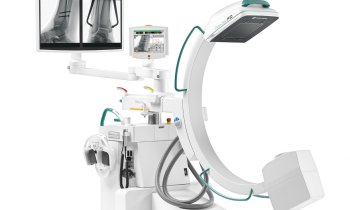EFORT 2009
H C Pruszinsky reports on the European Federation of National Associations of Orthopaedics and Traumatology Congress
One of the key topics at the EFORT Congress, held recently in Vienna, was on opportunities offered by computer-aided surgery (CAS) to achieve better results for many orthopaedic interventions. Within the next decade CAS will lead to the routine use of minimally invasive surgery (MIS) for knee prosthetics, hip replacement and osteotomy.

The high equipment costs (around 35,000 – 60,000 euros) currently prevent its larger use, leaving mainly university hospitals with the benefit from this modern technology. With a further spread of the procedures and easier handling of CAS, experts reckon that costs would also decrease. CAS is an ‘enhanced reality’, as CAS pioneer Stefano Zaffagnini puts it. ‘We can see a lot more of what we actually do during an operation. Surgical results can be significantly improved in this way.’
Knee surgery is one example. If an artificial knee joint is implanted, precise alignment is of vital importance for the result: Even a 3% deviation from the optimum alignment can result in the prosthesis not working: ‘If the operation is computer-aided, the computer takes over the optimum alignment with a precision that leads to the best possible results,’ says Dr Zaffagnini. ‘This is obviously reflected by the success rate.’
CAS is also beneficial for ligament treatment, because the causes of instability of loose ligaments are easier to assess – and these are very different from one person to the next.
Osteoporosis: under-diagnosed and under-treated
Statistically, a 50-year-old female European is at equally high risk of developing breast cancer as dying from a femoral neck fracture. According to a 2008 EU osteoporosis report, an estimated 48 million people across the EU suffer the disease. Professor Wolfhart Puhl of the Orthopädikum Allgäu shocked participants at the EFORT Congress with the dramatic figures. Only half of those affected are actually correctly diagnosed, and not even a quarter of them receive adequate treatment.
One would have thought that a figure of one million osteoporosis-related femoral neck fractures across the EU every year sensitises politicians and those who fund this problem. Early detection, targeted medical training, reimbursement models for bone density measurements, special treatment approaches for osteoporosis patients, interdisciplinary co-operation with experts in geriatrics – all were discussed during forums. New approaches include the use of non-cemented prostheses for osteoporosis fractures, for example, or research into the biomechanics of bones that can lead to new treatments for bone healing and growth. Research on osteoporosis will be the main focus of EFORT 2010, to be held in Madrid. The organizers also hope to facilitate a large-scale debate between patient organizations and political European decision makers.
Knee endoprostheses:
Pre-operative training has postoperative advantages
The trend towards the shortest possible hospital stays in acute hospitals following orthopaedic and trauma surgery poses a big challenge not only for rehabilitation; it also makes the preparation for this type of surgery even more important. A study presented by Dr Gavin McHugh (Dublin) compared rehabilitation success in patients after knee surgery. The group that carried out a targeted training programme to strengthen their leg muscles for six weeks prior to surgery achieved noticeably better postoperative results after physiotherapy in all categories – muscle strength, knee function, muscle structure – than those in the group with no training.
01.07.2009








